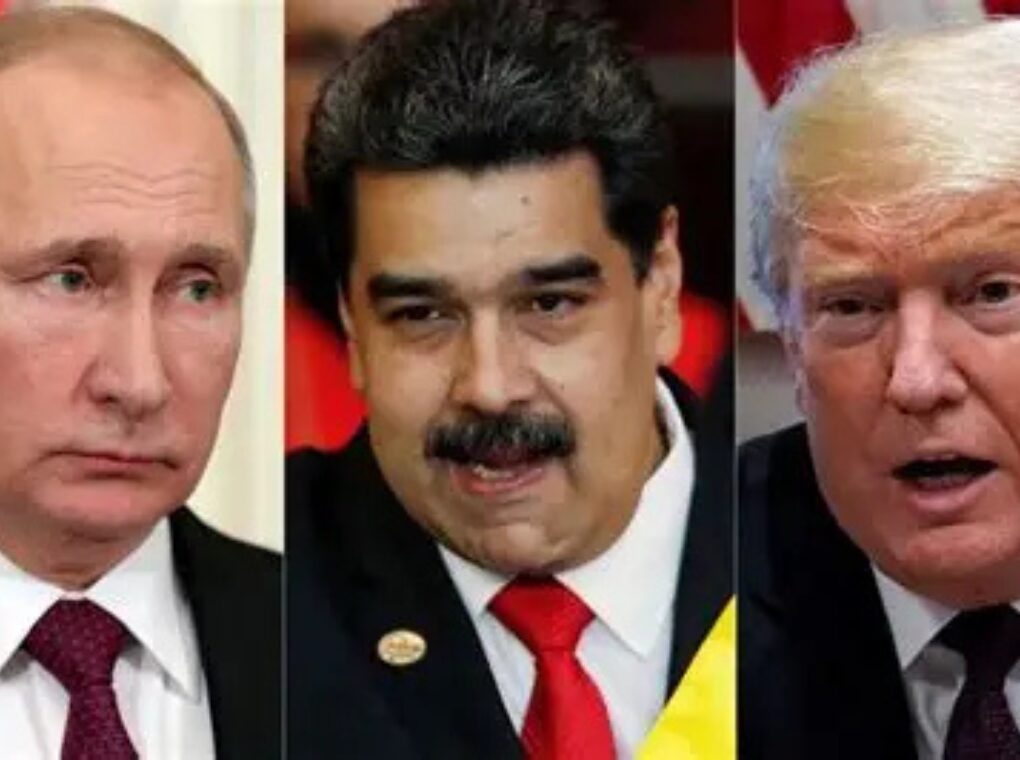In one of the most consequential foreign policy escalations of his presidency, Donald Trump has been presented with a broad suite of military options targeting Venezuela’s Nicolás Maduro regime—options that include land-based airstrikes and covert special operations raids. The developments, first reported by CBS News, unfold against the dramatic deployment of the USS Gerald R. Ford to the Caribbean Sea, signaling the most muscular U.S. posture in the region in years.
According to sources familiar with high-level White House deliberations, Secretary of Defense Pete Hegseth—whom Trump has informally nicknamed his “Secretary of War”—and Chairman of the Joint Chiefs of Staff Gen. Dan Caine met with the president this week in the Oval Office.
The briefing, built on newly compiled intelligence from Director of National Intelligence Tulsi Gabbard, outlined a range of scenarios the administration may soon confront. Options presented include precision strikes on drug-trafficking hubs, military installations, and even high-value regime leadership targets.
While Trump has not yet issued a final directive, insiders suggest a decision could come as early as this week. If approved, U.S. forces may execute targeted strikes against what the administration has branded “narco-terrorist” networks linked directly to Maduro’s inner circle.
A Massive U.S. Military Buildup in the Caribbean
The arrival of the USS Gerald R. Ford—a 100,000-ton nuclear-powered aircraft carrier capable of deploying up to 90 aircraft—marks a turning point in Washington’s approach to Caracas. Abruptly redeployed from the eastern Mediterranean last month, the Ford Carrier Strike Group represents the largest U.S. force projection in the region since the 1989 invasion of Panama.
The carrier is accompanied by destroyers USS Bainbridge and USS Mahan, the command ship USS Winston S. Churchill, and Carrier Air Wing Eight, which includes more than 60 aircraft. These forces join an already formidable U.S. presence comprising eight additional Navy vessels, the amphibious assault ship USS Iwo Jima, the USS San Antonio, a submarine, Reaper drones, F-35 fighters, and special operations teams. In total, roughly 10,000 U.S. military personnel are now positioned for rapid action.
Hegseth officially designated the emerging campaign as Operation Southern Spear, expanding American counter-narcotics operations across Latin America. For months, U.S. forces have conducted targeted maritime interdictions in the Caribbean and eastern Pacific, destroying more than 20 suspected drug-smuggling vessels and killing 76 individuals since September alone. Speaking bluntly at a defense summit in Indiana, Hegseth warned, “If you’re trafficking drugs to poison the American people… we will find you and we will kill you.”
Strikes on Venezuelan Soil: A Legal and Strategic Gamble
Among the options presented to Trump are airstrikes on ports, airports, and cocaine-processing labs deep inside Venezuelan territory. Even more dramatic scenarios include special forces raids aimed at capturing or killing Maduro and key members of his regime. U.S. Southern Command has already established specialized planning cells to identify targets using satellite feeds, signals intelligence, and human sources.
Yet such operations carry immense political and legal risk. Senior administration officials recently conceded to lawmakers that they lack a clear legal basis for military action inside a sovereign country—though some believe a justification could be “generated” if required. This marks a notable contrast with Trump’s recent comments on CBS’s 60 Minutes, where he distanced himself from earlier rhetoric advocating Maduro’s removal.
Critics on Capitol Hill warn the administration is bypassing congressional authority. Senate Democrats are demanding urgent briefings from Hegseth, Secretary of State Marco Rubio, and DNI Gabbard. “This is regime change without congressional oversight,” said one Democratic aide, noting the opaque nature of recent maritime strikes.
Analysts caution that any U.S. strike risks igniting a wider geopolitical confrontation, potentially drawing in Russia and China—both of which have supplied advanced weaponry and intelligence support to Maduro.
Caracas Responds With Defiance
In Venezuela, Maduro has responded forcefully, ordering 200,000 troops to initiate sweeping coastal defense drills involving land, air, naval, and missile units. State television has broadcast footage of anti-aircraft batteries, rapid riverine patrols, and mobilized militias preparing for what officials describe as “imperialist aggression.”
“The Yankee empire fabricates wars to justify its attacks,” Maduro declared as news of the Ford’s deployment broke.
Online Firestorm and Global Anxiety
The revelations have triggered intense debate across social media, and experts warned, “STRIKES ON THE TABLE,” while analysts highlighted Ford’s arrival as a tactical “shot clock,” pressuring Trump toward decisive action. Others amplified Maduro’s taunts, quoting him directly: “Come, you won’t come back.”
As the USS Gerald R. Ford cuts through the Caribbean waves, the world watches a geopolitical powder keg inch toward a tipping point. Trump’s “America First” doctrine promises assertive action—but Venezuela now presents the ultimate test: Will Washington strike first, or step back from the brink?
For now, the clock is ticking.
